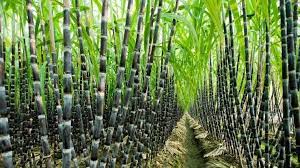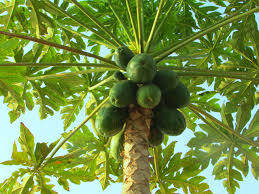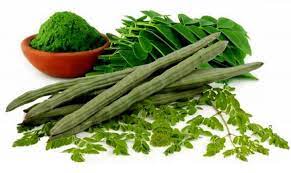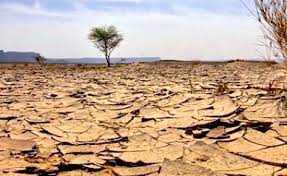
Sugarcane or sugar cane is a species of tall, perennial grass that is used for sugar production. The plants are two to six (2–6) meters tall with stout, jointed, fibrous stalks that are rich in sucrose, which accumulates in the stalk internodes. The stalk consists of fourteen percent (14%), sixty-eight percent (68%), fifteen percent (15%) and three percent (3%) more or less of fibre, water, soluble sugar and non-sugar respectively.
Sugarcane is a water-intensive crop that remains in the soil all year long. As one of the world’s thirstiest crops, sugarcane has a significant impact on many environmentally sensitive regions, like the Mekong Delta and the Atlantic Forest. Historic planting of sugarcane around the world has led to significant impacts on biodiversity.
Sugar from cane is helpful for blood insulin levels, body protein levels, and hydration. Due to its availability, sweetness, and slightly fruity flavour, it is frequently chosen above other sugars for its use in sweetening baked products and hot beverages. Growing consumer demand for cane sugar as a sweetener in food and beverage products drives the cane sugar market.
Currently, about one hundred and ten (110) countries produce sugar from either cane or beet, and eight countries produce sugar from both cane and beet. Sugarcane, on average, accounts for nearly eighty percent (80%) of global sugar production.
Sugar crops offer production alternatives to food, such as livestock feed, fibre and energy, particularly biofuels (sugar-based ethanol) and co-generation of electricity(cane bagasse). Sugarcane is generally regarded as one of the most significant and efficient sources of biomass for biofuel production. A wide range of environmental and social issues are connected with sugar production and processing, and sugar crop growers, processors, plus energy and food companies, are seeking ways to address concerns related to sugar production, biofuels and sustainability.
Sugarcane crop requires well prepared soil to ensure suffcient moisture retention, well leveled soil for easy irrigations and intercultural operation, soil with good tilth to facilitate earthing up and well drained soil to save the crop from waterlogging in case of heavy rains.
To prepare the field for Sugarcane a number of ploughings are given with a country plough, clods are broken, and stubbles are removed. This is followed by deep-ploughing with tractor or mould-board- plough and planking.
Finally, two to three (2 or 3) harrowings are given to bring the seed-bed into one tilth. After sowing, ridges are made to divide the field into convenient size beds for irrigation and drainage.
Sugarcane crop is propagated by stem-cutting. The upper-half portion of the plant bears buds of high viability and are best for raising new Crop. Cane setts of two or three nodes, bearing three to four (3 or 4) vegetative buds are made from the healthy, free from insect pests and diseases, top portions of the plants after hand peeling.
About thirty-five thousand (35,000) sets are required for one hectare. When selecting cultivars for yield it is important to appreciate the impact of the three main
components of yield (population, stalk mass and cane quality) on management and performance.
Sugarcane is considered as essentially a tropical plant. It is a long duration Crop and thus it encounters all the seasons viz: rainy, winter and summer during its life cycle. The "ideal" climate for production of maximum Sugar from sugarcane is characterized as a long, warm growing season with a high incidence of solar
radiation and adequate moisture (rainfall) - the plant uses from 148 to 300g of water to produce one (1) gram of dry substance.
Warm and humid climate is favorable for its growth. A temperature range of 30 to 40C with annual rainfall ranging between 70 cm to 150 cm is the best for its successful cultivation. Long duration of sunlight (summer) helps in producing thicket and short Sugarcane. Warm long days produce plants with more tillers, juice and high sucrose contents.
Sugarcane does not require any specific type of soil as it can be successfully raised on diverse soil types ranging from sandy soils to clay-loams & heavy clays. Sugarcane crop can be grown on a wide range of soils. The main characteristics of the soils suitable for sugarcane cultivation are that it must possess high contents of organic matter and is well drained. Therefore, heavy clay soil with proper drainage or light soil with irrigation facilities are also favorable for this crop.
Overall, sugarcane is best suited for subtropical and tropical regions of high temperature of 26 to 330C and can be grown well in most states in Nigeria with Kwara, Kano, Niger, Jigawa, Taraba, Katsina, Sokoto and Kaduna states taking the lead in the production today.
The global cane sugar market is expected to register a compound annual growth rate (CAGR) of five point three percent (5.3%) over the next five years.
The global cane sugar market has been segmented, based on category, into organic and conventional; based on form into crystallized sugar and liquid syrup; and based on application into bakery and confectionery, dairy, beverages, and other applications.
Nigeria produces approximately one million (1,000,000) metric tons of sugarcane per year and there is a massive opportunity for starting a profitable sugarcane farming business in Nigeria. But, unfortunately, Nigerian agricultural entrepreneurs and farmers are not taking advantage of this opportunity.
According to Nigeria’s National Bureau of Statistics (NBS) report, Nigeria spent a whopping eighty-nine billion naira (N 89,000,000,000) on sugarcane importation in the first quarter of 2021 alone.
Nigeria has comparative advantage in the cultivation and processing of sugar cane and it would create employment, earn taxes for government and earn scare foreign exchange.






















